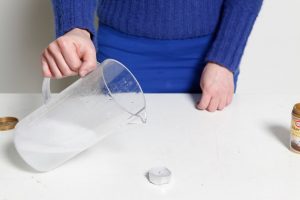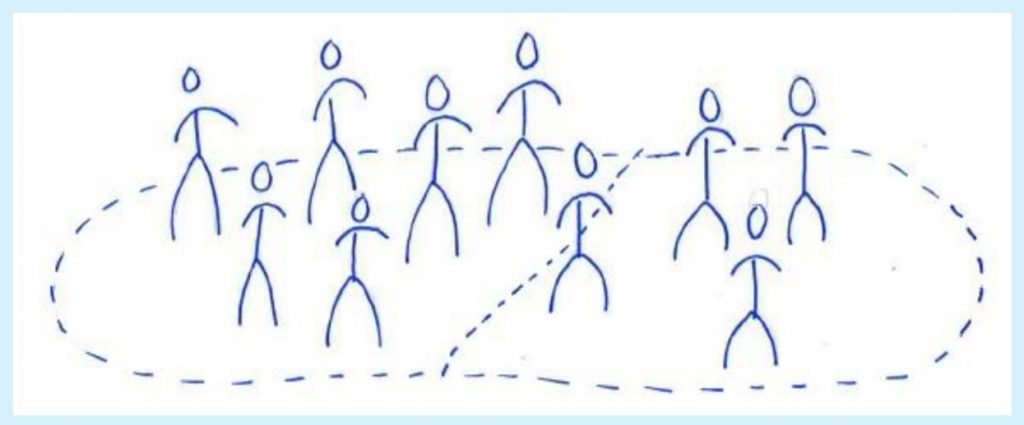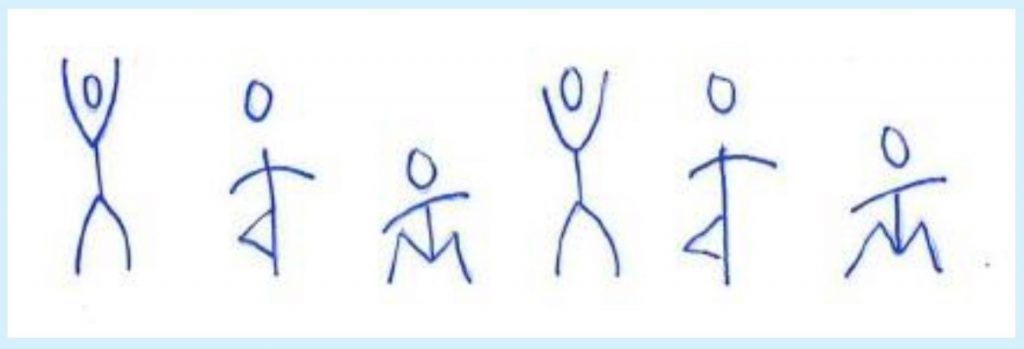Steg-1: Förbered några dekorativa saker till din raket
Bygg vingar, en raket eller vad du tycker är lämpligt av papp att dekorera raketen med.
Steg-2: Förbereda raket
Vi behöver en stark raket, så jag kommer att lägga upp den med en kopp till.
Klipp bara av kanten på koppen och sätt in den i en annan kopp för att göra två lager.
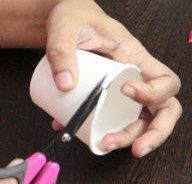
Ta en pappersmugg och sätt två hål genom att föra in en nål med en spets på muggens sida mot den motsatta sidan av koppen. Så att de två hålen förblir helt motsatta varandra.
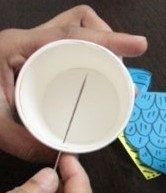
Se till att du håller dessa hål nära kanten på pappersmuggens mynning. Upprepa samma process för att göra hål på andra sidan av koppen. Det betyder att du gör fyra hål på de fyra sidorna av pappersmuggen.
Steg-3: Sätta i gummiband
Välj två gummiband och klipp av dem på ett ställe. Sätt sedan in gummibandet i två valfria hål på motsatta sidor av koppen och knyt dess änddel för att hålla en knut i båda ändarna. Så att det insatta bandet inte glider ut ur hålen.
Upprepa samma sak med den andra bandraden och håll täta knutar i den andra uppsättningen hål runt koppen. Slutligen, efter att ha knutit band till hålen på koppen, kan du se plusformen på den öppna sidan av pappersmuggens överkant.
Steg-4: Limma fast de dekorativa grejerna
Det är dags att dekorera vår raket! Håll pappersmuggen, dvs raketdelen, upp och ner. Och limma fast de dekorativa sakerna, dvs vingar och krona, på samma kopp.
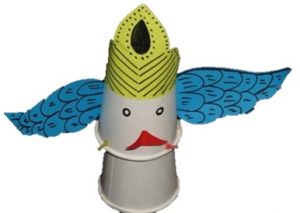
Steg-6: Flygande pappersmuggsraket
I det här steget väljer du en annan pappersmugg och placerar den i omvänt läge så att pappersmuggen är i uppochnedvänt läge. Vi kommer att använda denna omvända pappersmugg som basdel eller bärraket för din rymdraket.
Placera nu din raket ovanpå baskoppen men upp och ner. Se till att basen också är i omvänt läge. Ge sedan ett lätt tryck bara med fingertopparna och tryck raketen mot basen. Efter att ha tryckt den över basdelen, släpp trycket på raketdelen.

Vetenskapen bakom hur pappersmuggsraketen flyger
Vad säger Newtons tredje rörelselag? Det står; ”Varje handling har en likvärdig och motsatt reaktion”. Den uppfyller newtons tredje lag, raketdelen, när du trycker nedåt över basdelen och släpper, den flyger upp i luften. Det betyder att mängden tryck du ger på raketen gör att den flyger med samma mängd energi och kraft uppåt efter att ha släppt trycket.
Idén är hämtad från GoScienceGirls-bloggen
